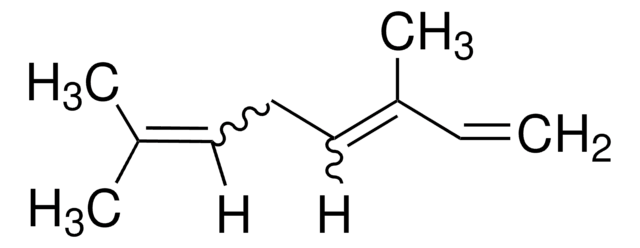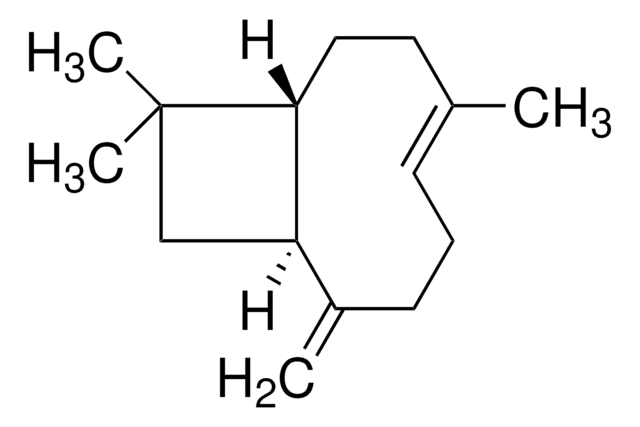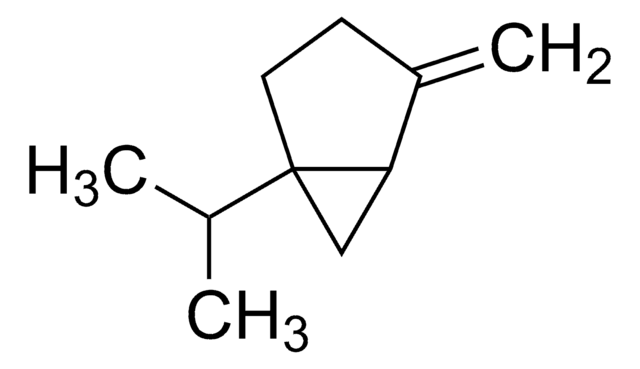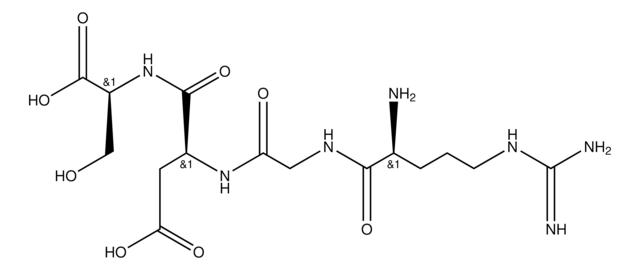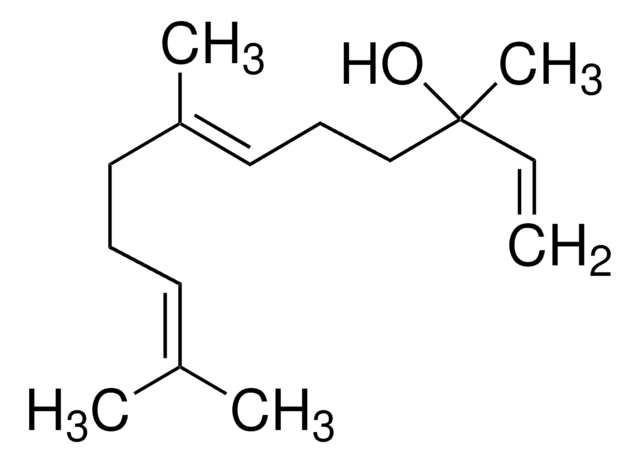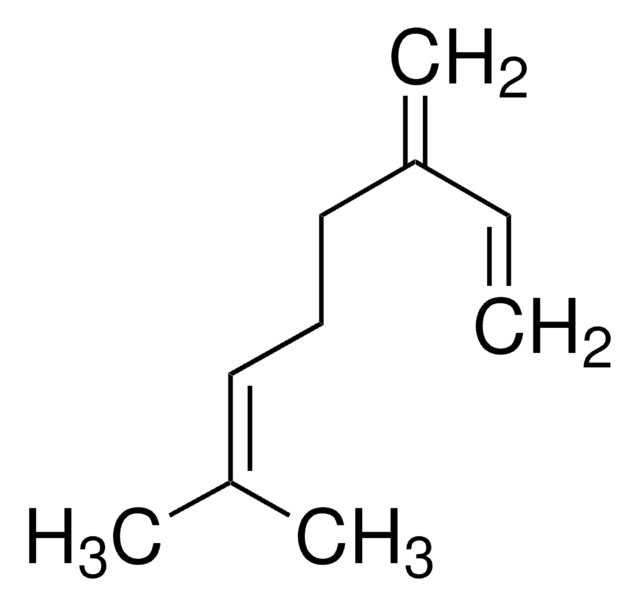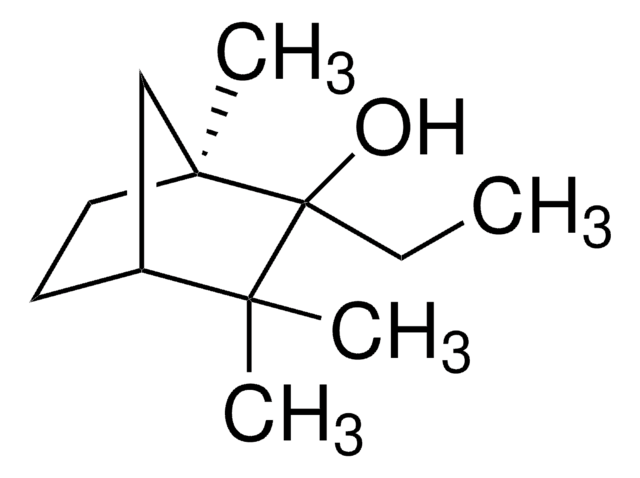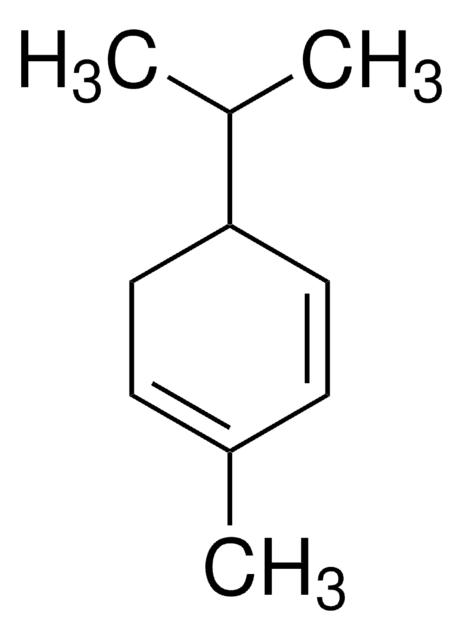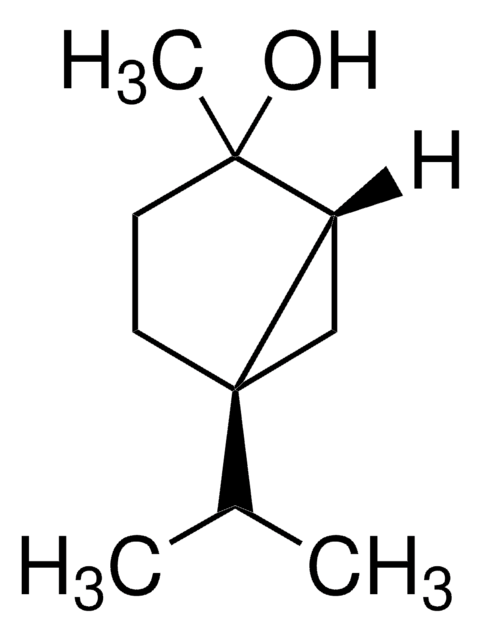W353901
Ocimene
mixture of isomers, stabilized, ≥90%
Sinonimo/i:
3,7-Dimethyl-1,3,6-octatrien
About This Item
Prodotti consigliati
Origine biologica
synthetic
Livello qualitativo
agenzia
meets purity specifications of JECFA
Conformità normativa
FDA 21 CFR 172.515
Saggio
≥90%
contiene
BHT as stabilizer
Indice di rifrazione
n20/D 1.485
P. ebollizione
65-66 °C/13 mmHg
Densità
0.818 g/mL at 20 °C (lit.)
applicazioni
flavors and fragrances
Documentazione
see Safety & Documentation for available documents
Organolettico
green; woody; tropical
Stringa SMILE
[H]C(CC([H])=C(C)C=C)=C(C)C
InChI
1S/C10H16/c1-5-10(4)8-6-7-9(2)3/h5,7-8H,1,6H2,2-4H3
IHPKGUQCSIINRJ-UHFFFAOYSA-N
Cerchi prodotti simili? Visita Guida al confronto tra prodotti
Descrizione generale
Applicazioni
- Volatile metabolomics and chemometric study provide insight into the formation of the characteristic cultivar aroma of Hemerocallis.: This study uses volatile metabolomics and chemometrics to explore the aroma formation in Hemerocallis, identifying significant volatile compounds including ocimene. The findings provide a deeper understanding of the biochemical pathways influencing aroma in plant cultivars (Zhou et al., 2023).
- A taste of sweet pepper: Volatile and non-volatile chemical composition of fresh sweet pepper (Capsicum annuum) in relation to sensory evaluation of taste.: Investigating the chemical composition of sweet peppers, this study identifies ocimene among the key volatiles contributing to flavor profiles, correlating chemical data with sensory evaluations to enhance understanding of taste perception in horticultural products (Eggink et al., 2012).
Esclusione di responsabilità
Avvertenze
Danger
Indicazioni di pericolo
Consigli di prudenza
Classi di pericolo
Aquatic Acute 1 - Aquatic Chronic 2 - Asp. Tox. 1 - Flam. Liq. 3 - Self-heat. 2 - Skin Irrit. 2
Codice della classe di stoccaggio
4.2 - Pyrophoric and self-heating hazardous materials
Classe di pericolosità dell'acqua (WGK)
WGK 3
Punto d’infiammabilità (°F)
132.8 °F - closed cup
Punto d’infiammabilità (°C)
56 °C - closed cup
Dispositivi di protezione individuale
Eyeshields, Faceshields, Gloves, type ABEK (EN14387) respirator filter
Scegli una delle versioni più recenti:
Possiedi già questo prodotto?
I documenti relativi ai prodotti acquistati recentemente sono disponibili nell’Archivio dei documenti.
I clienti hanno visto anche
Il team dei nostri ricercatori vanta grande esperienza in tutte le aree della ricerca quali Life Science, scienza dei materiali, sintesi chimica, cromatografia, discipline analitiche, ecc..
Contatta l'Assistenza Tecnica.